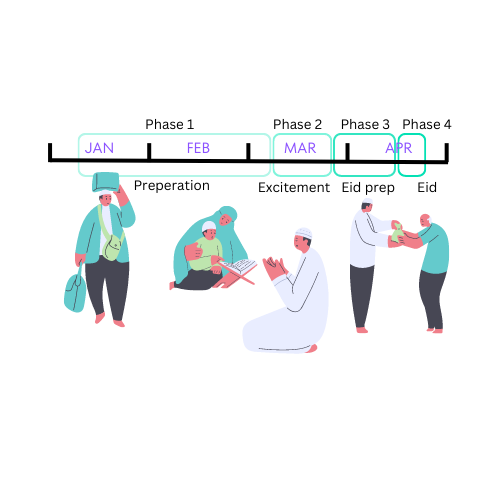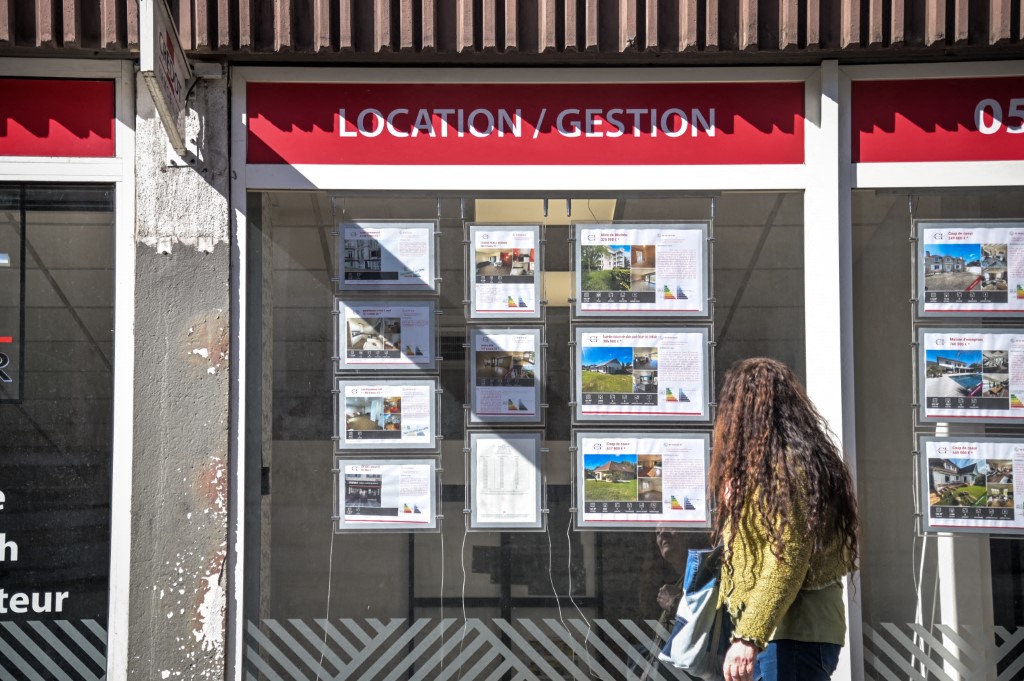We look at 6 interesting Ramadan consumer facts and what this means for your podcast and digital audio marketing strategy.
Ramadan is just around the corner, and I'm sure you're deep in media planning mode. While we cannot perfectly predict what consumer behavior will be this year, past data and consumer trends can certainly help guide confident assumptions.
We're here to help you with your Ramadan podcast and digital audio media strategy, by walking you through our recommendations based on past Ramadan consumer habits. Let's make the most out of your digital Ramadan media investment! Download the 2023 Ramadan Audio Toolkit
The four phases of Ramadan
Think with Google highlights four distinct phases of Ramadan based on search behavior. This indicates activity commences 8 weeks ahead of celebrations and throughout.

- Phase one = Preparation phase. Interest and prep for Ramadan start up to 8 weeks ahead of the Holy Month.
- Phase two = Excitement phase. Just before and during Ramadan people are online seeking promotions.
- Phase three = Eid Prep phase. Planning for one of the biggest celebrations commences up to 2 weeks ahead.
- Phase four = Eid phase. During this time consumers are looking for convenience and offers.
During these distinct four phases, we recommend using these consumer insights to adjust your message, offer, and tone. For example, phase 1 builds on the excitement with an upbeat, aspirational message. During phase 2 pricing and deals could be the key focus and in phase 4 look at gifting as the core premise.
With a programmatic podcast strategy instant creative swaps are easily achieved. Be sure to pre-record all creative ahead of time for smoother transitions.
During Ramadan people are trying new brands
YouGov and Meta 2022 research among residents of the UAE, Saudi Arabia, and Egypt shows 64% of shoppers during Ramadan get excited about trying new brands or buying products from abroad. But to capture these new shoppers the data shows chances of your product going into shoppers' carts increase if your ad is in the consumer's local language and refers to or includes Ramadan/Eid.
To ensure your brand is one of those discovered, record your audio ad in the target audience's language, plus consider using relevant colloquialisms, tone, music, and trends too. Once the content is right, target your distribution by language and location so it's heard by the right people. For example, selecting Arabic podcasts could help with this strategy.
Consumer spending increases but to capitalize brands need to invest
Did you know in 2022 data shows sales during Ramadan increased by 9%. But with the cost of living increase your business may be toying with the idea of reducing media spending this Ramadan. But this could be a detrimental decision. Think Google states businesses that reduced or eliminated media spending during a recession risked losing 15% of their revenue when compared with competitors that doubled spending. Google goes on to say businesses that increased media investment enjoyed a 17% growth in incremental sales.
Your Ramadan sales depend on wise but steady (or increased) media investment. Make every podcast ad dollar work to its fullest by utilizing detailed targeting options available and optimizing during the campaign. To help reach your most valuable audience we suggest using location, language, and context as your primary targeting filters, where applicable.
Consumer search and online purchasing increases
Google saw a 45% year-on-year increase in search interest for “Ramadan” and “Eid Al-Fitr”. Additionally, almost 95% of residents in UAE and KSA are shopping online and this accelerates during the Holy Month.
To improve your search and e-commerce chances use audio as part of a well-rounded omnichannel strategy. Audio will incrementally increase your reach and awareness as many people listen to podcasts when away from a screen. Tuning in while performing other tasks, such as driving, relaxing, or doing household chores, you're rewarded with a unique opportunity to communicate directly with a valuable customer when they are most engaged and not distributed by other advertisers.
The key is to balance a consistent brand story across all channels while still capitalizing on the unique strengths of the media type. For audio, that means utilizing the deep connection and heightened trust listeners have with hosts by aligning tone and message to the content and using a sponsorship approach.
People are on their phones more
Mobile media is key during Ramadan due to increased usage. Egypt's National Telecom Regulatory Authority (NTRA) announced a 68% increase in the use of mobile internet services during Ramadan 2022. Furthermore, independent research company Global Web Index (GWI) discovered in their 2022 UAE survey, the majority of respondents say the ads that they encounter on their smartphones have a huge impact on their purchasing decision.
What does this mean? Well, as 65% of podcast consumers listen to podcasts through their mobile device, and the average time spent with audio on mobile is set to reach 58 mins every day by 2024, audio will help you to capture and engage with the mobile audience. For maximum reach, broadcast ads across multiple networks and shows are achieved using a programmatic approach.
Mobile gaming is a popular Ramadan activity
As time spent on mobile increases, it makes sense that GWI discovered 76% of people in the UAE are playing mobile games. Specifically, during Ramadan, 41% of the respondents state that they will use their smartphones to play mobile games during this time. The report goes on to say among these Ramadan mobile gamers, time spent each day is between 30 minutes – 2 hours. That's a lot of ears and a lot of time!
Capturing this opportunity with non-interruptive audio ads. These audio ads are served during gameplay without causing an interruption. This media solves the major irritation of disrupted play, is delivered in a high-attention environment, and you get a high share-of-ear because only one ad is played per session. PLUS! it's unskippable.
THE BOTTOM LINE
During Ramadan, your focus should be to meet your customers' needs at speed and scale. These stats confidently show digital audio is a strong channel to achieve this. By using audio in a strategic way, you can reach a valuable audience because it places your ad where customers are and when they are most engaged.
Download our Ramadan Audio Toolkit, to help plan the audio element of your media mix.






